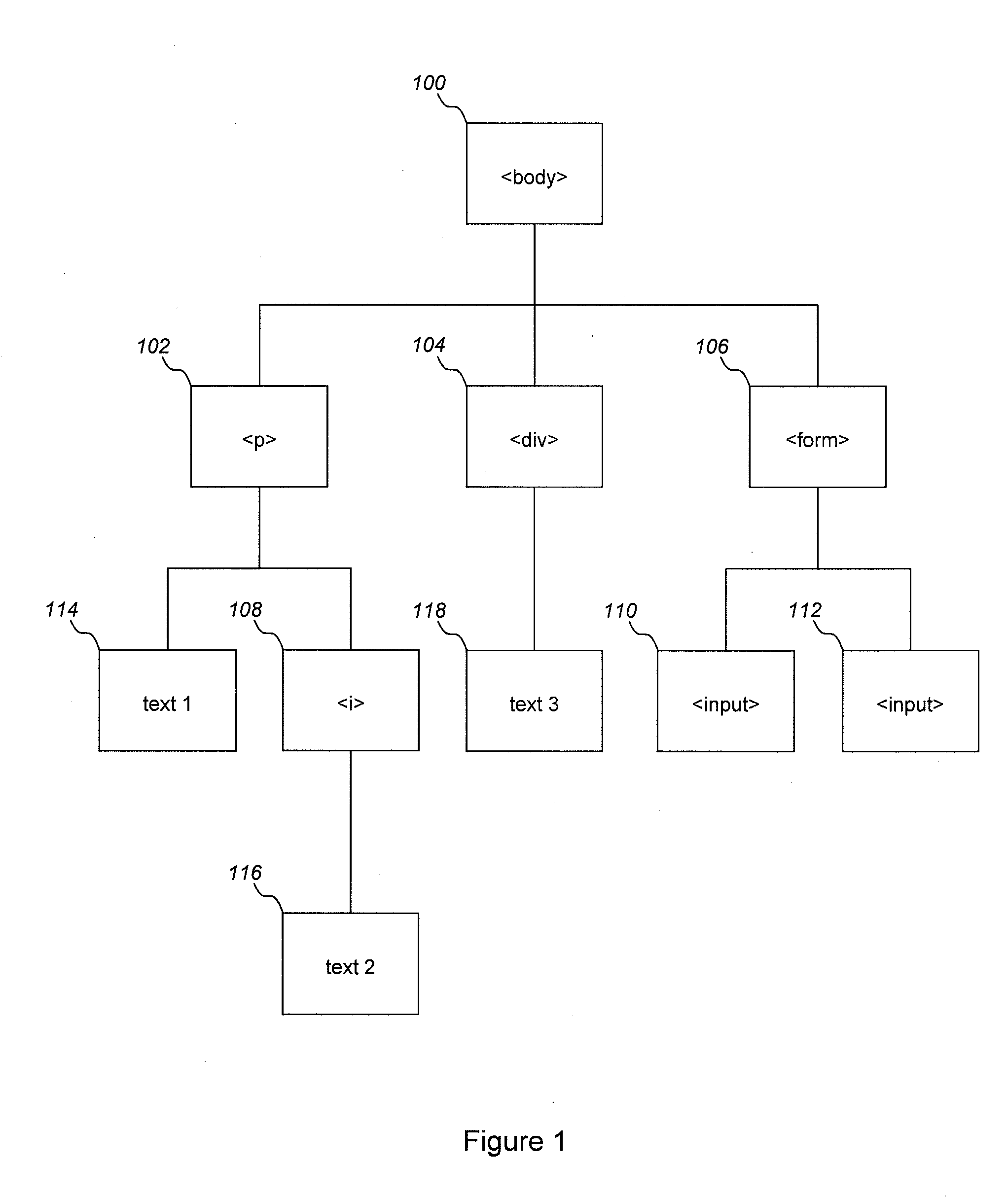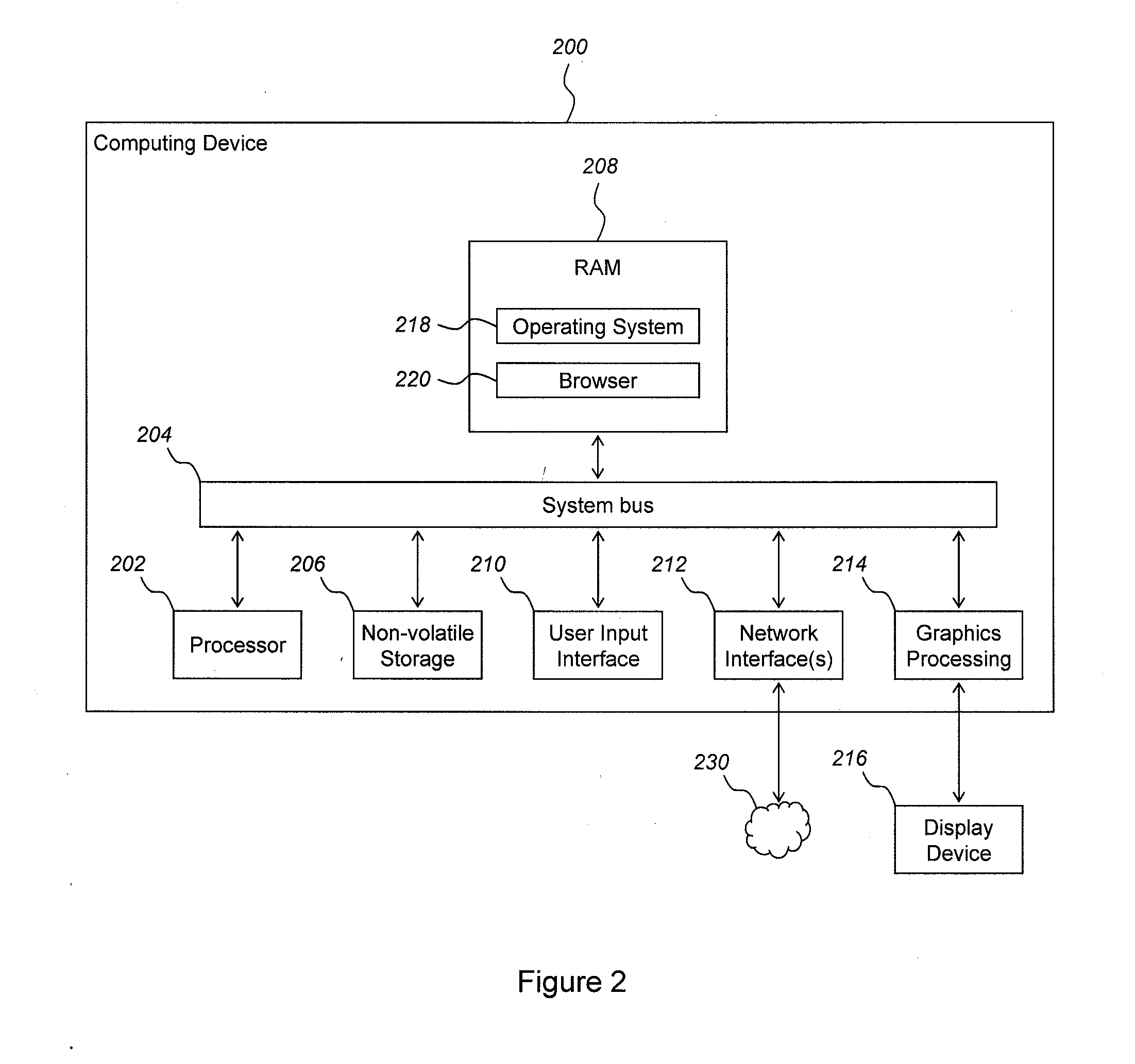Method for displaying a data set
a data set and display method technology, applied in the field of display methods, to achieve the effect of reducing processing
- Summary
- Abstract
- Description
- Claims
- Application Information
AI Technical Summary
Benefits of technology
Problems solved by technology
Method used
Image
Examples
first embodiment
[0074]The browser 220 of the computing device 200 may be configured to perform the present invention in a first embodiment, which involves the processing and rendering of a structured document within a display area of the display device 216.
[0075]The structured document may be derived by the browser 220 from HTML content as described above. As is known in the art, the structured document may be configured to allow for it to be laid out within any of a plurality of layout areas, each of different sizes and / or shapes. A dimension of the layout area (e.g. its width) may be selected in order to match a dimension of a display area of the display device 216. Other dimensions of the layout area may be determined by the number of objects within the structured document and their layout within it.
[0076]Due to the size of the display area of the display device 216, it may not be possible to display the entire structured document within the display area whilst ensuring that smaller features wit...
second embodiment
[0177]In an alternative to the invention the browser 220 may be configured to group the children of an object into subsets using a pre-defined strategy in step 702, rather than grouping the children of an object into subsets arbitrarily.
[0178]A suitable pre-defined strategy used by the browser 220 in one such arrangement may include the browser 220 grouping some of the children of an object into a subset based on the arrangement of the tags to which those child objects correspond in content described in a mark-up language. For example, the browser 220 may group some of the children of an object into a subset if they correspond to a sequence of HTML tags, such as . . . . . . . . . , etc. As there may be a higher probability that such child objects may be located within the region occupied by their parent, the browser 220 may group the child objects into a subset so that there is a higher chance that the subset is not processed when they are not within the selected portion (than th...
PUM
 Login to View More
Login to View More Abstract
Description
Claims
Application Information
 Login to View More
Login to View More - R&D
- Intellectual Property
- Life Sciences
- Materials
- Tech Scout
- Unparalleled Data Quality
- Higher Quality Content
- 60% Fewer Hallucinations
Browse by: Latest US Patents, China's latest patents, Technical Efficacy Thesaurus, Application Domain, Technology Topic, Popular Technical Reports.
© 2025 PatSnap. All rights reserved.Legal|Privacy policy|Modern Slavery Act Transparency Statement|Sitemap|About US| Contact US: help@patsnap.com



